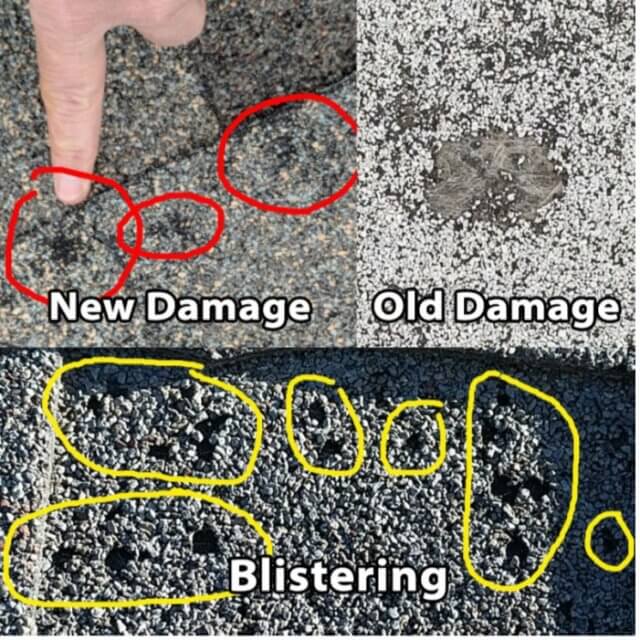 Door-to-door roofers and roofing phone solicitors are hard at work to convince you to sign up with them for your roof replacement. One of their favorite tactics is to tell you that they can see hail damage on your roof from the street.
Door-to-door roofers and roofing phone solicitors are hard at work to convince you to sign up with them for your roof replacement. One of their favorite tactics is to tell you that they can see hail damage on your roof from the street.
Is this true? Why can they see it but you don’t notice anything unusual on your roof? What does hail damage look like anyway?
If you can see parts of your roof from a 2nd story window, or if you’ve climbed up on it to self-inspect after the recent hail storms in Colorado Springs, and you’re wondering if you have damage or not, and don’t know if what you’re seeing on your roof is from the recent storms, here are some tips.
The Basics
When a hard hail stone hits an asphalt shingle, it dents the shingle mat and dislodges or loosens the rock granules, then the granules may fall out of the dent during rain. New, or recent hail damage will appear as a black bruise in the shingle. It will be circular, oval, or “splatter” shaped. If it’s older damage, it will have a rounder shape because more of the granules have fallen out and the mat will be gray instead of black. Much older damage will likely show the fiberglass fibers because more of the asphalt mat has eroded.
If you see “pock” marks instead of dents, that is likely blistering instead of hail damage. This is caused by thermal problems that have overheated the shingles. Thermal problems can also cause cracking of the shingles, and some times roofing or home inspectors confuse both blisters and thermal cracks for hail damage.
If you don’t want to self-inspect for hail damage, the best thing to do is not trust the door-to-door guys, but call Homestead Roofing and ask us to evaluate your roof. As our customers know, we’ll give you an accurate opinion about your roof’s condition and whether or not you should file a claim.
